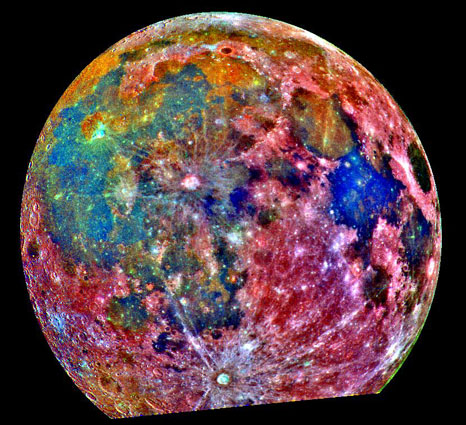Difference between revisions of "May 10, 2004"
| (One intermediate revision by the same user not shown) | |||
| Line 1: | Line 1: | ||
__NOTOC__ | __NOTOC__ | ||
=Galileo's Colorful Moon= | =Galileo's Colorful Moon= | ||
| + | <!-- Start of content --> | ||
<p align="center"> | <p align="center"> | ||
<table width="640" border="0" align="center" cellpadding="6" cellspacing="2"> | <table width="640" border="0" align="center" cellpadding="6" cellspacing="2"> | ||
| Line 39: | Line 40: | ||
<!-- Cleanup of credits --> | <!-- Cleanup of credits --> | ||
<p> </p> | <p> </p> | ||
| − | + | <!-- End of content --> | |
| − | + | {{wiki/ArticleFooter}} | |
| − | |||
| − | |||
| − | <!-- | ||
| − | |||
| − | |||
| − | |||
| − | |||
| − | |||
| − | |||
| − | |||
Latest revision as of 18:16, 7 February 2015
Galileo's Colorful Moon
Image Credit: JPL Photojournal |
|
Galileo's Colorful Moon The Moon is a mono-color sphere - shades of grey, chromatically bounded by some whitish glare and black shadows. The problem is that our eyes, so wonderfully sensitive to faint light and subtle hues aren't good enough. But spacecraft can use filters to image in wavelengths that are sensitive to particular elements, and then computers can exaggerate the colors so that our humble Moon looks like a gaudy Christmas ornament. Such colorized views are good because they help us understand the differences in composition and sometimes age of different parts of the Moon. And we can carry that knowledge back to the eyepiece when observing. The colors show, as we know from black and white views, that there are two major types of lunar materials. The cratered highlands are made largely of iron-poor rocks which show up red in this 3-filtered image. You can see though that not all highlands are the same - an orangish area near Schickard (bottom left), and near the north pole must have some compositional differences. And the maria also have differ shades of blue and even some golden hues, showing that they are not all identical. The brightest blue in Tranquillitatis is due to titanium-rich lavas, and the orange mare (parts of Imbrium, Frigoris and Serenitatis) are lower titanium lavas. Patches of purple blue (SE of Copernicus) are due to pyroclastic (ashy, sort of) rocks. The brightest areas are the freshly (well, in the last billion years or so) crushed and exposed surfaces of young impact craters. Tycho and its rays are clear, but so are Aristarchus, Copernicus, Proclus, and various smaller craters west of Nectaris, near the north pole, and even just west of Plato. Take a look. Technical Details: Related Links: Yesterday's LPOD: The Crater Formerly Known As Prinz Tomorrow's LPOD: Who Named That Crater? |
Author & Editor:
Charles A. Wood
COMMENTS?
Register, Log in, and join in the comments.




